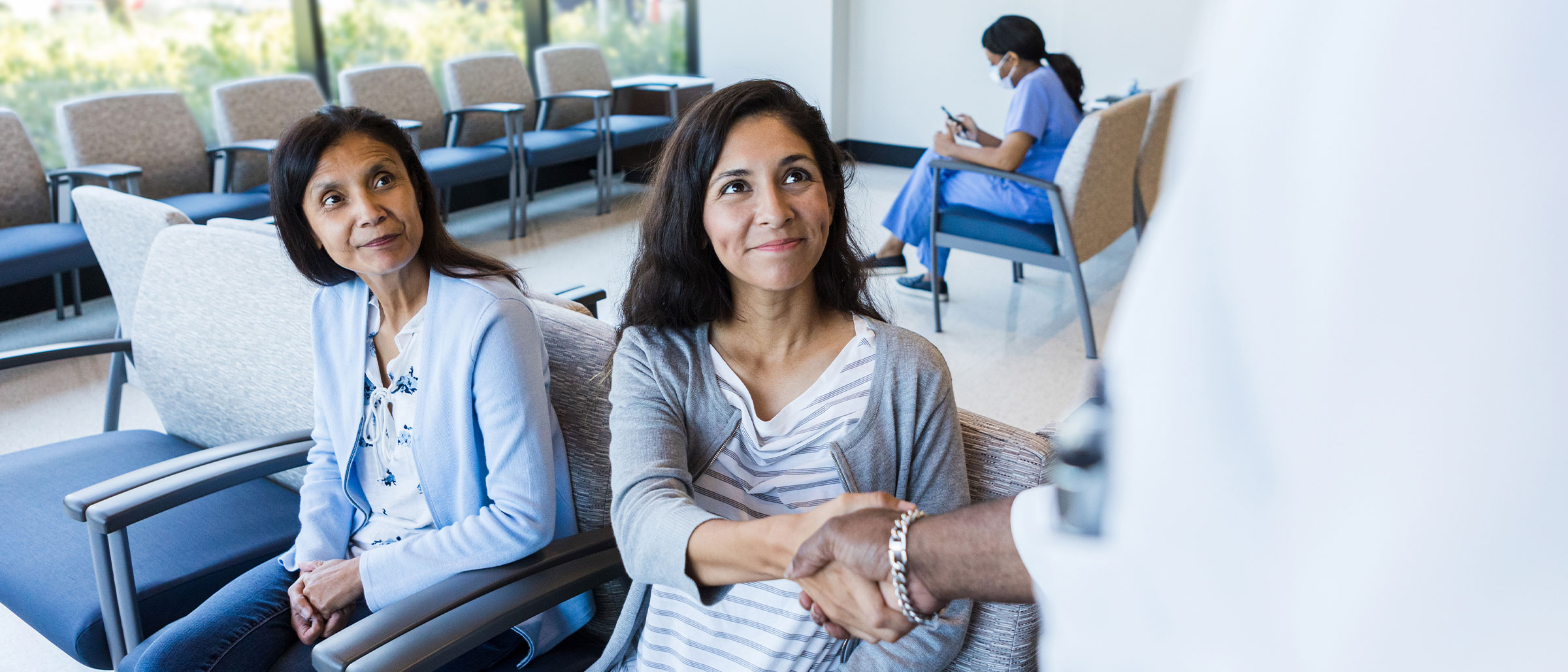Overcoming Care Discrepancies in Minority Groups
Welcome back to our blog series, “From the Desk of Dr. Julian.” I’m Julian Castaneda, MD, Medical Director at The Judge Group. Judge’s healthcare expertise meets the needs of healthcare professionals by identifying and providing the necessary talent across the entire healthcare landscape and developing and delivering training to healthcare companies. As a veteran in the medical field with a wealth of experience, Judge brought me on board to serve as a resource and advisor to Judge, as well as to our contractors and clients.
Care discrepancies in minority and low socioeconomic groups
One of the first topics that I would like to discuss is the concept of Healthcare Disparities. Even though the issue of unequal treatment of minorities in healthcare has been under scrutiny for years, society has only recently started to accept that it is a ubiquitous problem in our society and that much effort must be made to increase its awareness and eradication. It is a subject that is near and dear to my own clinical environment since I currently serve in a healthcare setting that treats patients from all backgrounds.
Historically, not only has there been an imbalance of healthcare resources available to people of lower socioeconomic status, but it is also evident that the unequal treatment of minorities by healthcare practitioners continues to exist. The Institute of Medicine (IOM) report, Unequal Treatment: Confronting Racial and Ethnic Disparities in Healthcare, concluded that “(al)though [a] myriad [of] sources contribute to these disparities… evidence suggests that bias, prejudice, and stereotyping on the part of healthcare providers contribute[s] to differences in care.”1
Care discrepancies and the health endemic in minority groups
Not only does this issue exist, but it is a significant contributor to the health endemic that presents in people of color and minority groups. National data indicate that minority Americans experience adverse health from preventable and treatable conditions such as cardiovascular disease, diabetes, asthma, cancer, and HIV/AIDS at a rate far higher than Caucasians.2 As a doctor whose sworn duty is to help and heal people, I am saddened that people are dying from preventable diseases for reasons related to social stature and racial identity.
Minority groups and adverse social determinants (SDOH)
The reasons behind the unequal treatment of minorities are two-fold. For one, minority groups are largely underinsured or have no insurance. As a result, they will avoid seeing a doctor until absolutely necessary or not at all. They may also seek medical care outside of the country that may or may not be the care they really need. Secondly, minorities are subject to adverse social determinants (SDOH) described by the CDC as poverty, poor access to education, employment status, unhealthy housing, and exposure to a general disadvantage.3
The CDC states, “Differences in SDOH contribute to the stark and persistent chronic disease disparities in the United States among racial, ethnic, and socioeconomic groups,4 systematically limiting opportunities for members of some groups to be healthy”.5 In other words, not only do these adverse social determinants promote unequal care, but they also inhibit minorities from growing up and aging in healthy environments.
Stress, a silent killer in minority and low socioeconomic groups
The main result of unhealthy environments is stress. Stress can lead to an increased risk of many diseases, including obesity, diabetes, depression, as well as inflammatory and autoimmune disorders.6
This fact is critical to consider, especially since researchers estimate that individual behavior determines the overall health and risk of premature death of an individual by 40%.7 Therefore, minority groups are often suffering from lack of care or poor care by medical professionals, coupled with detrimental living environments that contribute to the overall poor health of these communities of individuals.
Change starts with the healthcare worker
While we could spend days talking about the political and social change that is necessary to overcome these types of care disparity statistics, change happens one person at a time. As healthcare workers, be it doctors, nurses, lab staff, or even the housekeeping staff, we can make a difference one patient at a time. We need to remember that all humans are humans. Our responsibility is to treat each human with care, compassion, and kindness.
Creating a welcoming and accepting environment for the patient
Seeking medical assistance is a challenging task for many, not just because of the barriers we’ve discussed, but because many people find themselves embarrassed, fearful of judgment, and possibly afraid of the outcome of a consultation. For many, ignorance is bliss, and they view their health this way as well. While we can never force someone to consider their health, as medical professionals, we can educate them on the numerous curable and preventable diseases that are prevalent in minority communities. By speaking candidly and with respect, even getting one person to seek medical care can prevent untimely deaths.
I do not mean this to sound so serious or doom-and-gloom, but I really want to impress upon you that every interaction can have a direct impact on whether a person seeks medical intervention again. Healthcare is a major determinant of happiness and quality of life, and as medical professionals, we are responsible for helping everyone pursue a healthy life. This begins by creating a warm, welcoming, and accepting care environment for patients.
How staffing agencies and recruiters can impact change
Uché Blackstock, MD, founder of Advancing Health Equity, shared with Forbes during an interview that one of the major ways to overcome the health care disparities for minorities is to ensure a diverse workforce in the medical field.8 By staffing our offices and hospitals with staff of varied ethnic diversities, not only will minority groups feel more represented and comfortable speaking with a healthcare professional, but they will also be more likely to be treated equally.
“Racial concordance in clinician-patient encounters is statistically shown to improve communication between patient and clinician,” Dr. Blackstock states.9 These interactions are also shown to be more patient-centered, meaning the clinician listens to the patient and doesn’t make judgments based on the patient’s racial identity to determine the severity of the reported health issue.
The importance of diverse recruiting and staffing teams
Additionally, something as simple as being able to speak the patient’s native tongue can be the determining factor in whether a patient will seek further treatment. Feeling comfortable with their clinician can come in several different forms: Being able to speak with a clinician in the language you are most comfortable with, and potentially with a clinician that looks like you, is shown to increase future preventative care visits.10
As recruiters and staffers, it is then critical to gather qualified healthcare candidates from pools regardless of racial identity. Not only is this good for patients, but medical offices and hospitals can find their care statistics improve as a result. A diverse clinical staff can directly result in more successful preventative care for patients and medical providers.
Final words
Thank you for taking the time to read my second installment in this blog series. It is my hope that through the discussion of these topics, we can begin to make a difference in healthcare and show the care and compassion that is critical to supporting health in our patients. While we cannot change all by ourselves, it is my hope that we will make the most of every interaction with a patient by treating them with care, compassion, and respect.
I look forward to continuing to share my knowledge with you through this blog series. Our next installment will discuss the finances of being a healthcare professional. This is a seldom-discussed topic, but one I see affecting my students and peers daily. In the meantime, please email me at socialmedia2@judge.com with any specific healthcare topics or trends you would like me to address in a future post.




